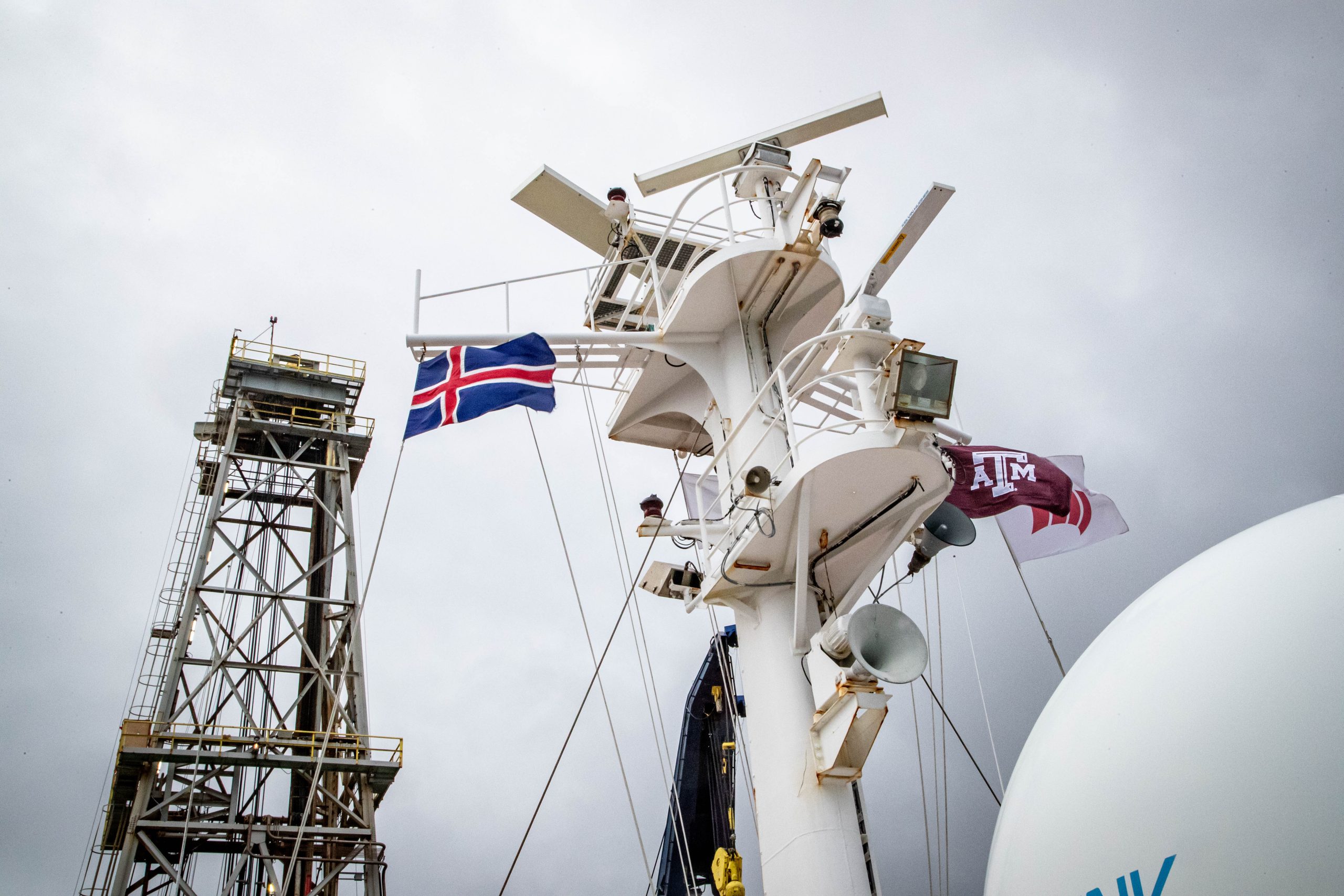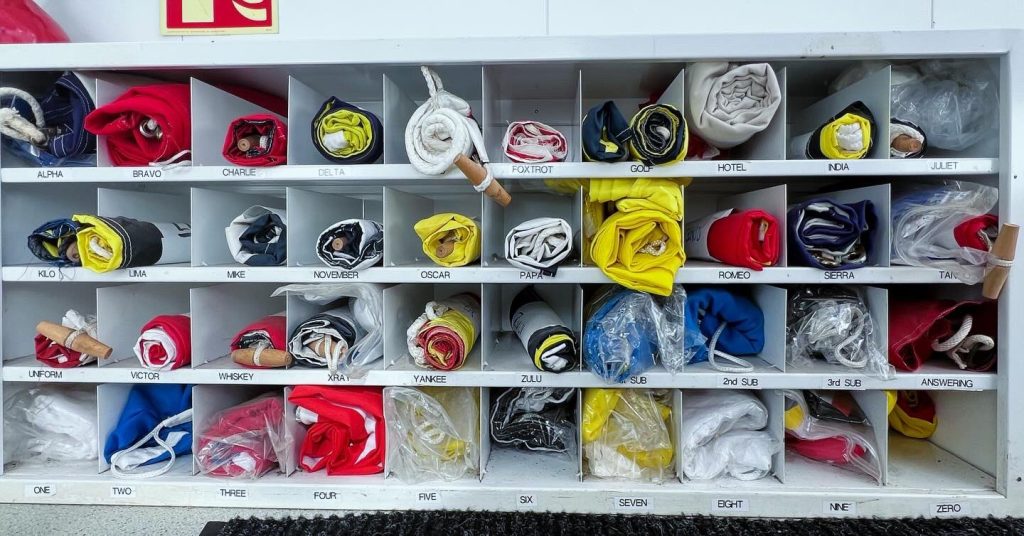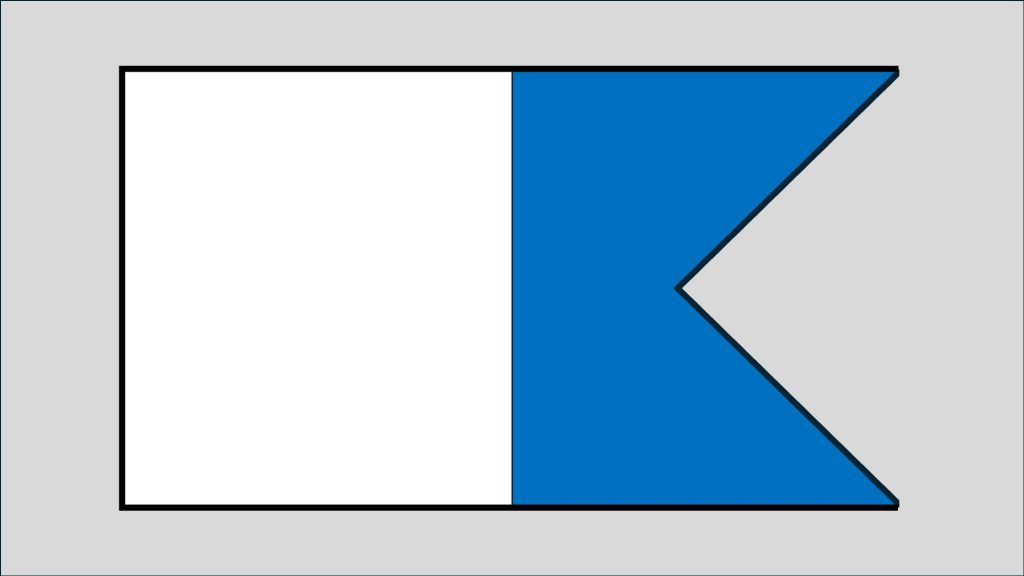4.3 Communication Ship-to-Ship

There exist various types of shipboard communications for modern-day oceanographic research expeditions. From printing out flyers and hanging them on a wall, to internal telephone systems and email messages, it is easy to broadcast announcements throughout a ship. But what are the methods used to communicate between ships? Here we review some of the tools utilized by JOIDES Resolution.
Nautical Flags
Nautical flags are primarily used as a method of communication between ships. While in port, there are a number of flags that are flown to indicate the ship’s registration and right to be in the port. For example, JOIDES Resolution would fly the flag of the country in which they were making the port call, the ship’s company flag (Siem Offshore), the client’s flag (Texas A&M University), and the flag of the country where the ship was registered (Cyprus). In addition to these four flags, flags representing letters A-Z and numbers 0-9 could be flown alone or together in a combination. There are also repeater flags used as a substitute in the event that a letter needs to be repeated.
While each alphanumeric nautical flag has a specific meaning when flown by itself, it can also be flown together to represent a code word. These special meanings and code words are set by the International Maritime Organization (IMO) and are listed in a publication called the International Code of Signals. This publication is reproduced every five years to incorporate any new changes in the signals.

Ship Radio
The primary method for ship-to-ship communication was with the radio. The captain, chief, second and third mates, and the radio operator all were required to have a General Operator’s Certificate. This certificate means someone has the proper training in the procedures and language of maritime radio operators. At times, local regulations or law will require nautical flags to be used in conjunction with radio communications. For example, when IODP Expedition 372 was at anchor just outside Fremantle and the hull was being cleaned by machine and by divers, the JR was required to fly the nautical flag Alfa (“I have a diver down; keep well clear at slow speed”).

Additional Communication Tools
If there is a language barrier or the radio and other forms of electronic communication aren’t working, there are other backup forms of ship-to-ship communication.
Morse Code
Morse code is a method of communication where letters of the alphabet are coded into a series of short and long signal durations, called dots and dashes. It is reported that the inventor Samuel Morse first realized that pulses of electrical current could be conveyed over wires when he was at sea returning from Europe in the early 1800’s. He invented his dot-and-dash alphabet in 1836 and transmitted the first message in May 24, 1844, “What hath God wrought?”.
Although Morse code has been phased out and replaced with more modern, high-tech communication systems, all officers on board ships including JOIDES Resolution should be very familiar with Morse code, as vessel fog signals and maneuvering signals are done in Morse code and have specific signal letter meanings. For example, “E” is used for “I am altering my course to starboard.” The letter “B” is used for “I am being towed (fog signal).” The letter “U” means “You are running into danger.” And the letter “O” is for man overboard.
Morse code can also be used for more complex communication, and can be done by means of flashing light, sound, radio telephony, or hand flags. As mentioned above, all of these codes are described in the International Code of Signals, which is published by the IMO (International Maritime Organization) and is required to be on board all ships. However, with the use of modern radio and satellite communications, the need to use Morse code is rare.
Aldis Lamp
If needed, the Aldis lamp, also called a signal lamp, was available on the JOIDES Resolution Bridge and was a way to communicate with another ship through Morse code. This is a hand-held lamp that connects to a large battery pack. The user can pull a trigger on the lamp’s handle and flash the light in long or short bursts.
Photos of an Aldis Lamp on JOIDES Resolution (Credit: L. Bohn, IODP EXP 402)
[*Text on this page was adapted from E. Todd’s JR blog post Nautical Flags and L. Guertin’s blog post From the Rig Floor.]

